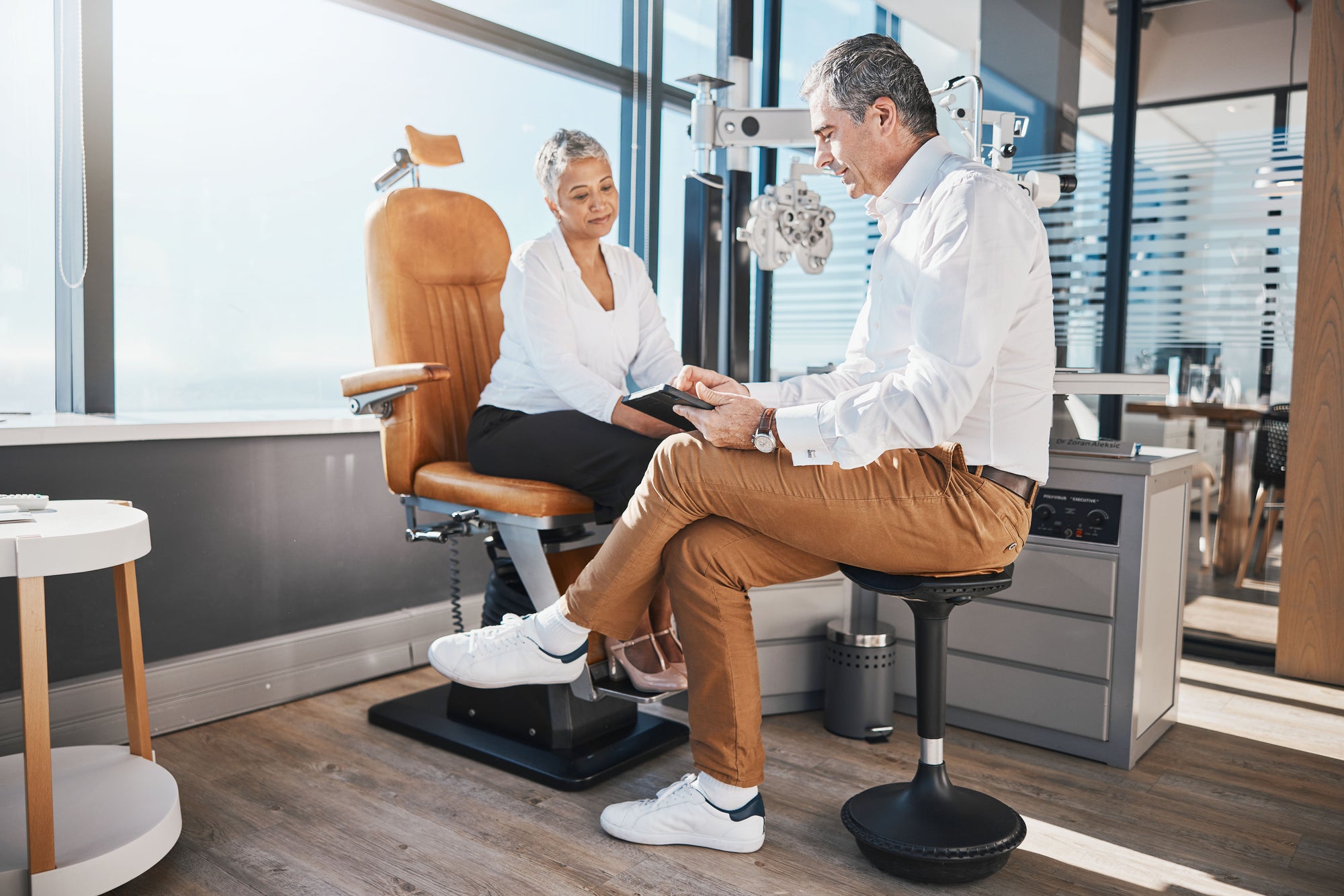

· By Trevor Horne
Unlocking the Ergonomic Potential of Saddle Stools for Enhanced Patient Care
In the dynamic healthcare field, patient care quality is of the utmost importance. Providing efficient, comfortable, and focused care is crucial in creating positive patient outcomes and fostering a reputation for excellence. Many factors can contribute to improved patient care, including cutting-edge equipment, advanced treatment methods, and a dedicated team of professionals. One vital aspect often overlooked, however, is the role of ergonomics in enhancing patient care—particularly through the use of Saddle Stools.
Saddle Stools, thoughtfully designed with healthcare practitioners in mind, offer numerous ergonomic benefits for professionals across various fields, including dentistry, veterinary, surgery, and more. In this in-depth guide, we explore the powerful impact of Saddle Stools on patient care, delving into the connection between ergonomics and care quality, practical examples of Saddle Stools in action, and the considerations to keep in mind when selecting the ideal Saddle Stool for your healthcare practice.
Join us as we embark on this captivating journey to unlock the full ergonomic potential of Saddle Stools and reveal how these innovative seating solutions can elevate patient care in healthcare practices. Gain valuable insights and learn how to harness the power of ergonomics to provide exceptional, comfortable patient care, positioning your practice at the forefront of innovation and excellence.
The Connection Between Ergonomics and Patient Care Quality
Ergonomics, the science of designing workspaces, tools, and equipment that suit the body's natural movement, is essential for healthcare professionals to provide optimal patient care. Practitioners working in an ergonomic environment can maintain proper posture, avoid strain-related discomfort, and minimize fatigue. These factors enable medical professionals to deliver more attentive, effective, and focused care, ultimately benefiting patients and ensuring high-quality treatment outcomes. Thus, incorporating ergonomic seating solutions like Saddle Stools into healthcare practices benefits practitioners and translates to an improved patient experience.
How Saddle Stools Help Healthcare Practitioners Provide More Efficient and Comfortable Care
Saddle Stools offer unique ergonomic advantages that allow healthcare professionals to provide efficient and comfortable care to their patients:
- Improved posture and spinal alignment: The seat design of a Saddle Stool encourages an upright posture, supporting the natural curvature of the spine and reducing the risk of back pain.
- Enhanced mobility: Featuring smooth-gliding casters, Saddle Stools enable practitioners to move around the workspace easily, ensuring seamless transitions between tasks and quicker patient care.
- Height and tilt adjustability: Saddle Stools offer easy height and tilt adjustments, ensuring optimal ergonomic positioning for each healthcare professional, which helps maintain focus and energy throughout the day.
The Role of Saddle Stools in Reducing the Risk of Cross-Contamination During Patient Care
In addition to their ergonomic benefits, Saddle Stools can also play a crucial role in maintaining infection control standards during patient care:
- Easy-to-clean surfaces: Saddle Stools typically feature surfaces made from simple materials to disinfect and maintain, preventing the spread of pathogens.
- Hands-free operation: Many Saddle Stool models are designed with foot-controlled height adjustment mechanisms, minimizing the need for hand contact and reducing the possibility of cross-contamination.
- Integration with proper infection control protocols: Saddle Stools can easily be incorporated into existing infection control protocols in healthcare practices, ensuring a safe and hygienic environment for both practitioners and patients.
Case Studies on How Saddle Stools Have Improved Patient Care in Various Healthcare Settings
The following case studies reveal the real-world impact Saddle Stools can have on patient care in diverse healthcare settings:
- Dental practice in Ottawa: After integrating Saddle Stools into their clinic, the team of dentists reported increased comfort and focus, resulting in more precise treatments and improved patient experiences.
- Veterinary clinic in Montreal: Veterinary staff members noticed a marked improvement in mobility and reduced the need for awkward body positions when handling animals, enhancing the overall quality of care delivered.
- Surgical center in Halifax: Surgeons who used Saddle Stools during lengthy procedures reported decreased fatigue levels and superior stability, leading to more precise movements and better patient outcomes.
Selecting the Ideal Saddle Stool to Cater to Specific Patient Care Needs
When choosing a Saddle Stool for your healthcare practice, consider the following factors to ensure the model best fits your patient care needs:
- Practice type: Different healthcare disciplines may have unique seating requirements, such as a need for stools that support specific movements or can accommodate specialized equipment.
- Seat preferences: Consider the materials, cushioning, and design of available Saddle Stool models to find the one that best aligns with your comfort preferences and the aesthetics of your practice.
- Adjustability features: Choose a model with easily accessible height and tilt adjustment mechanisms to cater to various practitioners' ergonomic needs.
- Customer reviews: Research customer reviews to gain insights into the experiences of other healthcare professionals who have used Saddle Stools in their practices.
Integrating Saddle Stools into a Comprehensive Ergonomics Plan for Improved Patient Care Outcomes
Optimizing patient care through ergonomics extends beyond the use of Saddle Stools. To create a well-rounded plan focusing on patient comfort and safety, consider integrating other ergonomic best practices:
- Developing effective ergonomics training for staff: Ensure that all healthcare professionals in your practice understand the importance of proper ergonomics and instruct them on best practices.
- Incorporating ergonomic furniture and equipment: Use ergonomic work surfaces, specialty lighting, and other adaptive equipment that can enhance patient care.
- Periodically assessing your practice's ergonomics: Continuously evaluate your ergonomic plan's effectiveness and make adjustments as needed to maintain progress in improved patient care.
